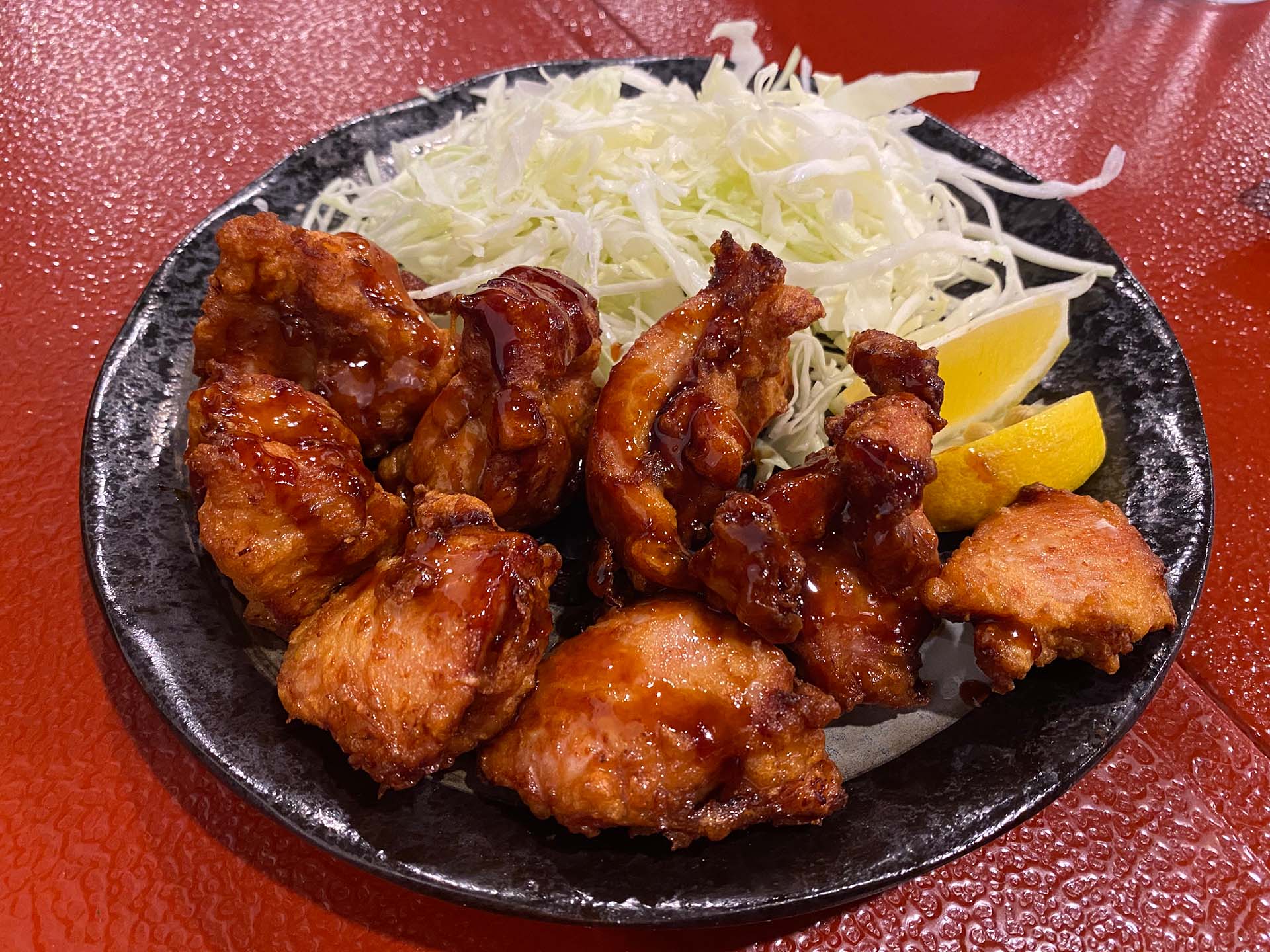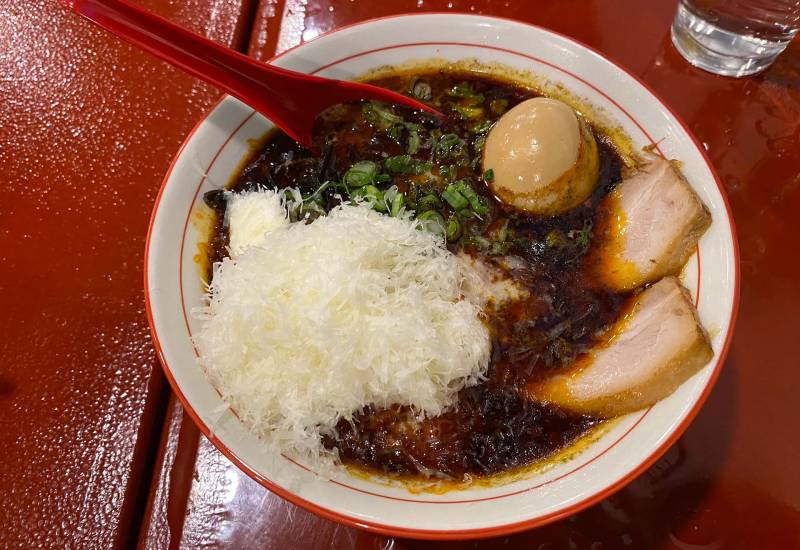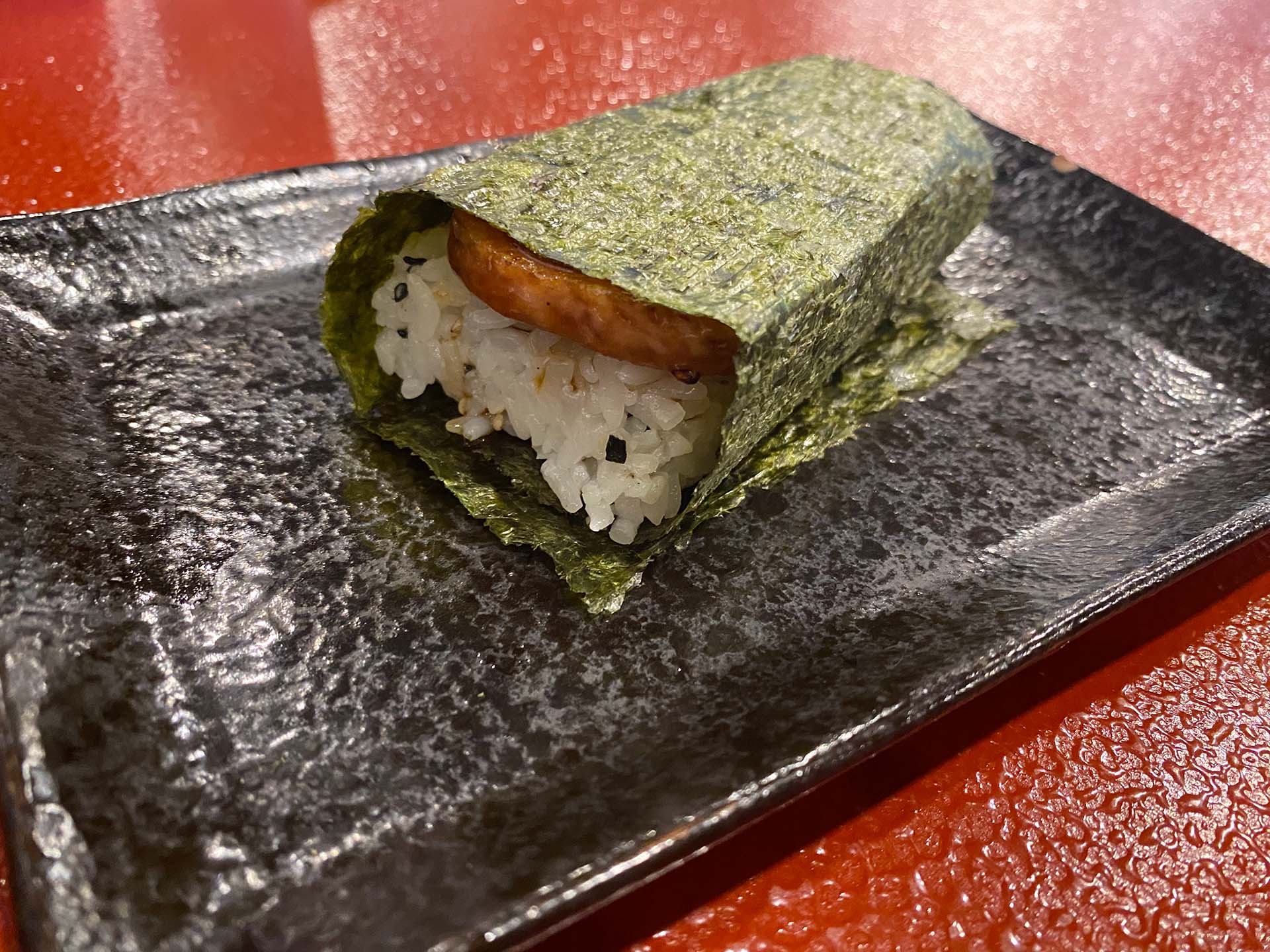At Berkeley’s Masa Ramen Bistro, one vintage travel poster on the wall depicts a woman in a stylized kimono. In another, a young man crouches on a surfboard, riding a wave alongside a school of flying fish. “Fly to Hawaii,” the poster reads, and that’s also the promise that the restaurant offers to prospective diners: It’s a marriage between Japanese traditionalism and chill island vibes — between tonkotsu on one side of the menu and Spam musubi on the other.
Not for nothing, the restaurant also serves some of the tastiest ramen in the East Bay.
Open since September on University Avenue, a few blocks away from the UC Berkeley campus, Masa Ramen is the brainchild of its namesake, chef Tim Masa Kawamoto. He and his partners in the venture, Clyde and Jackie Ulep, were born and raised in the Honolulu area, and upon arriving on the mainland, they identified what seemed like a surefire business opportunity. They met a lot of Hawaiians who’d relocated to the Bay Area, and, at the same time, they hadn’t been very impressed with the local ramen scene.
“We just felt like there was a niche for it,” Kawamoto says.
So Kawamoto, who is Japanese and has spent the better part of his career cooking at Japanese restaurants in Hawaii, set out to create his own unique mix of the two culinary traditions. Hawaii itself has its own rich ramen culture, Kawamoto explains. Because there are so many people of Japanese descent who live there — and many Japanese tourists who visit — there are a lot of high-quality traditional ramen shops, which span many of the different regional styles that are popular in Japan. At the same time, Hawaii has its own local style known as saimin, a noodle soup created by Chinese and Japanese workers on the pineapple plantations during the early 20th century.

Masa Ramen Bistro doesn’t serve saimin. And, for the most part, it doesn’t really aspire to serve “Hawaiian ramen,” in that literal sense. If anything, the focus of the menu is comfort food, both Hawaiian and Japanese — but the two sides are mostly kept separate. The Hawaiian side includes things like mochiko (sweet rice flour) fried chicken, Spam musubi and loco moco. On the Japanese side, the restaurant serves curry plates and karaage-style fried chicken, in addition to its daily lineup of six or seven different ramens.



